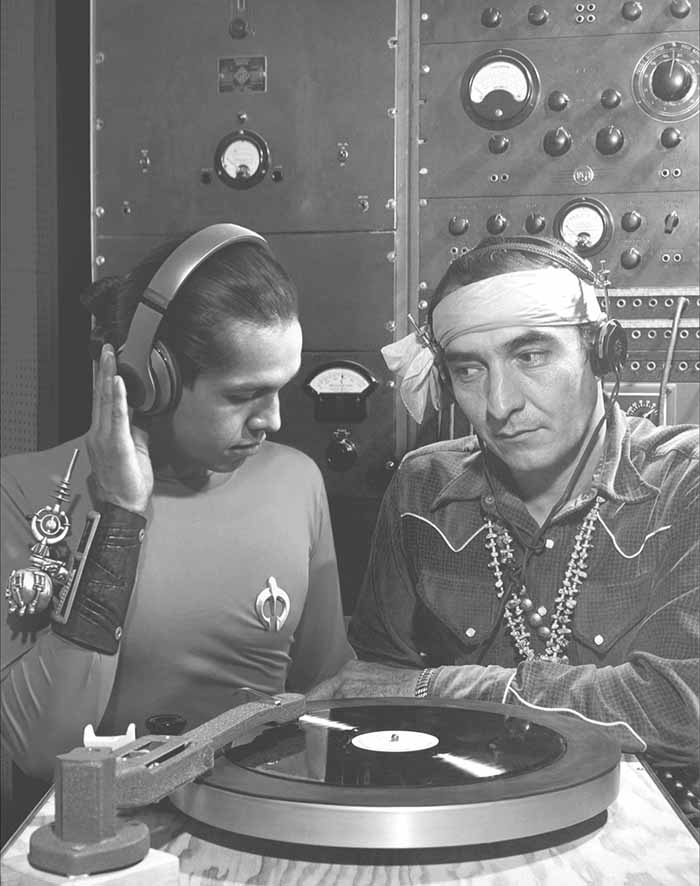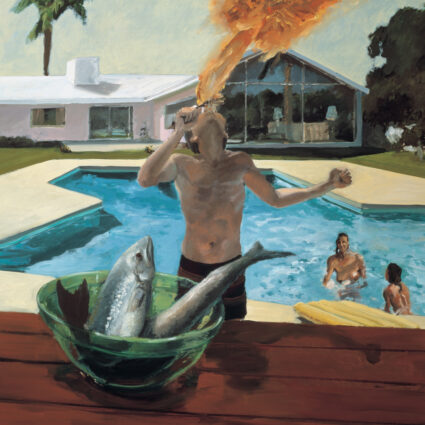
National Hispanic Cultural Center, Albuquerque
May 4 – Spring 2019
Identity. It’s one of those words, concepts, ways of making sense of the world and ourselves that could fill volumes. Indeed, volumes of stories: self-made, inherited, or, in many instances, projected. Identity is that way—easy and then not so much.
Because It’s Time: Unraveling Race and Place in NM, now installed at the National Hispanic Cultural Center, is, admittedly, an obvious declarative in the ongoing conversations about rendering selfhood. Yet, NHCC’s approach opens up complex dialogues that go beyond the eponymous (and also elusive) term “Hispanic” that guides the institution. Stretching their legs, the curatorial team invited thirteen artists who have roots locally, nationally, and internationally to exhibit their work. Those artists then invited thirteen more artists to participate. Because It’s Time did not then subscribe to exhibiting one ethnicity, race, gender, nationality, citizenship status, orientation, ability, or religion (the exhibition was also complemented with work from NHCC’s permanent collection). Rather, for all twenty-six participants, the only “qualifying factor was that every artist must have spent some time in New Mexico.” It’s a broad premise, almost too broad, but with place as the anchor and intersectionality the compass, the exhibition acknowledges how we see ourselves in relation to the realms where we live and interact.
Watermelon-sized blue pills hang from the ceiling, like upside down bouquets of balloons or tennis shoes hanging from electrical lines, melancholy yet somehow saccharine. Each pill, on closer inspection, had the number 701 etched across, a reference to the HIV prevention drug PrEP (pre-exposure prophylaxis), and as artist Apolo Gomez broaches, the disproportionate rates of HIV infection among communities of color. Rose B. Simpson’s Stand With/Withstand, an ambiguously gendered clay figure, stood just below, heralding the exhibition in a stance of self-possession.
The themes were many and, in some cases, fractured, much like identity itself
Zahra Hassan Marwan’s The desert knows me well, the night, the paper, the pen was an intimate diptych. On the left, a woman (mother?) thrusts a young Zahra across the seas from a port city on the Persian Gulf. On the right, another woman stands ready to catch the same young Zahra as she flies, a diaspora through the skies and across watercolor paintings and into an adobe-laden landscape. Each has a combination of Arabic and Spanish script, each conjuring a mixed upbringing from the East to the Southwest. Elsewhere, actual adobe-stepped pillars, whitewashed with lime and capped with long mirrors, reflect back the likeness of the viewer. Joanne Keane Lopez’s Nine Ways to Say Hello multiplies the surrounds exactly nine times.
In eight archival prints—four black and white, four color—some figures look at the camera; others are at work. All are black. All were taken by Monica Kennedy in reference to finding community in a state with an African American population of 3%. Ehren Kee Natay’s Listening pictures an impossible meeting: the artist and his grandfather, sitting at a vintage turntable. The younger never met the elder, an established musician and the first Diné man to record an album for commercial release, yet the image relays the connection that music has established between the two.
One of the most sensorially stunning works was Nani and Autumn Chacon’s Lineage, which occupied its own room off to a corner. Walking in, I could hear what at first listen was white noise emanating from tiny speakers plugged into a network of cords running along the walls in the configuration of an abstract landscape. The multimedia installation resonated with the sounds of four generations of heart beats, including that of Autumn Chacon’s baby in utero.
When I viewed Erin Currier’s New Mexico Guadalupe, a collage of Our Lady of Guadalupe, a mestiza hero of the Americas, wearing a squash blossom necklace and holding Paulo Freire’s book Pedagogy of Hope, I wondered very deeply about the nature of cultural appropriation and whether collaging meaningful references to other cultures justifies a dialogue about women’s solidarity.
The themes were many and, in some cases, fractured, much like identity itself, just as Adelina Cruz’s (Re)membering Who We Are, a vibrant self-portrait painted against the green paddles of nopales and the dismembered body of Coyolxauhqui, an Aztec goddess once severed into pieces by her own brother. To remember is to try as we may to put the pieces of ourselves back together. On the whole, Because It’s Time is certainly a clap-back to exhibitions that have fixed on only one identifier. Even so, it’s also a nod to those forebears and as such is both connected to and in contrast with the past.



